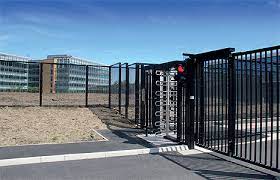Revolutionizing the Fencing Industry: The Rise of Innovative Business Solutions
The fencing industry, once seen as traditional and stagnant, is undergoing a transformation thanks to the emergence of innovative business solutions. Companies within the sector are now embracing advanced technologies and creative strategies to revolutionize the way fencing products are manufactured, delivered, and marketed. In this blog post, we will explore the dynamics and advancements within the fencing business solutions sector, shedding light on the latest innovations and their implications.
Embracing Technology: Automation and Robotics
One of the most significant advancements in the fencing industry is the integration of automation and robotics in the manufacturing process. Traditionally, fencing materials were manually fabricated, resulting in slow production times, high labor costs, and occasional inconsistencies. However, with the adoption of automation and robotics, companies can now manufacture fencing products with unmatched precision and efficiency.
Robotic systems can handle tasks such as cutting, welding, and painting with unparalleled accuracy and speed. By reducing human error and increasing production capacity, manufacturers can offer higher-quality products at competitive prices. This not only benefits businesses but also consumers who can now access durable and aesthetically pleasing fencing solutions.
Enhanced Efficiency: Inventory and Supply Chain Management
In addition to technological advancements in manufacturing, fencing companies are leveraging innovative business solutions to streamline their inventory and supply chain management processes. Efficient inventory management is crucial in ensuring timely delivery, reducing costs, and optimizing resources.
Through the implementation of robust inventory management systems, companies can now accurately track the availability of fencing materials, monitor stock levels, and predict demand. This allows for better planning and minimizes the risk of stockouts or overstocking. Furthermore, the integration of cloud-based platforms enables real-time collaboration between manufacturers, suppliers, and distributors, enhancing communication and optimizing the overall supply chain.
Digitized Marketing: Online Platforms and E-commerce
The advent of digitization has had a profound impact on the way industries market their products and services, and the fencing industry is no exception. Businesses are increasingly utilizing online platforms and e-commerce strategies to reach a wider customer base and enhance their brand visibility.
By creating engaging websites, utilizing social media platforms, and employing targeted digital marketing campaigns, fencing companies can now showcase their products, highlight their unique selling points, and attract potential customers. Additionally, the integration of e-commerce platforms enables seamless purchasing experiences, providing customers with convenient options to browse, select, and order fencing products online. This not only expands market reach but also streamlines the buying process, saving time and effort for both businesses and consumers.
Conclusion: A Glimpse Into the Future
As the fencing industry continues to embrace innovation and technology, it is clear that business solutions are revolutionizing the sector. The integration of automation and robotics in manufacturing processes, streamlined inventory and supply chain management, and digitized marketing strategies are reshaping the industry landscape and creating new opportunities for growth.
Looking ahead, we can expect further advancements in areas such as sustainability, where companies may explore eco-friendly materials and manufacturing processes to meet the growing demand for environmentally conscious solutions. Additionally, the integration of data analytics and artificial intelligence has the potential to enhance decision-making processes and optimize product development.
In conclusion, the fencing industry is undergoing a significant transformation through innovative business solutions. With advancements in technology, streamlined processes, and digitized marketing strategies, fencing companies are poised to meet the evolving needs of customers while driving the future trajectory of the industry.

